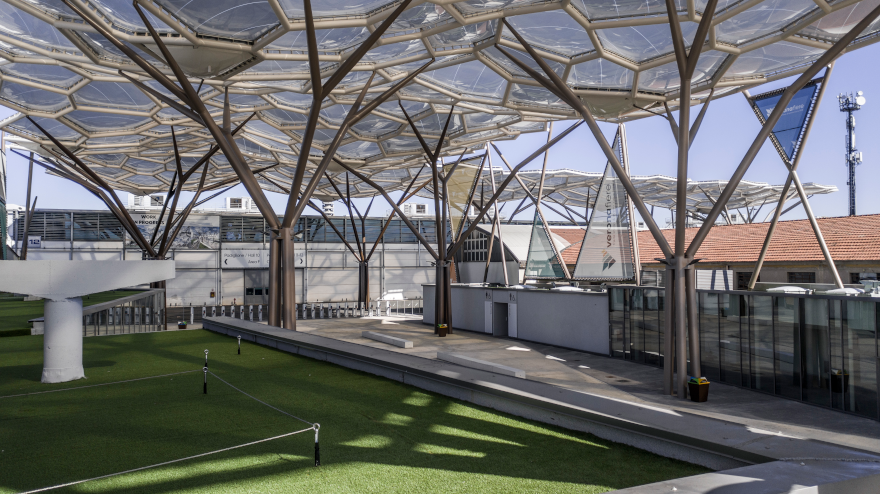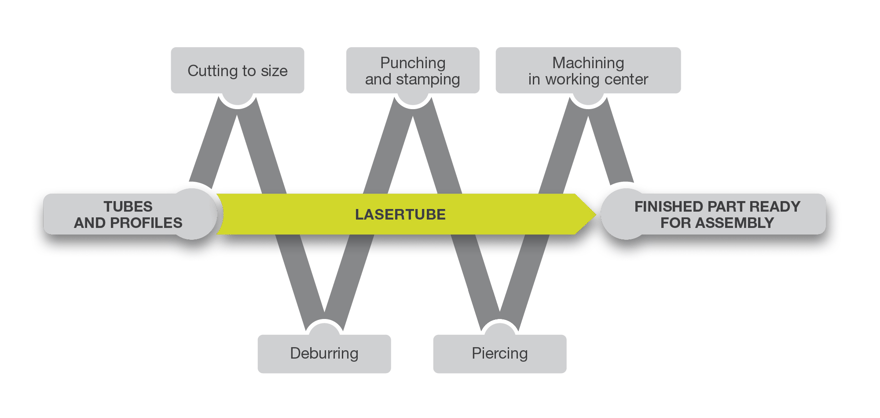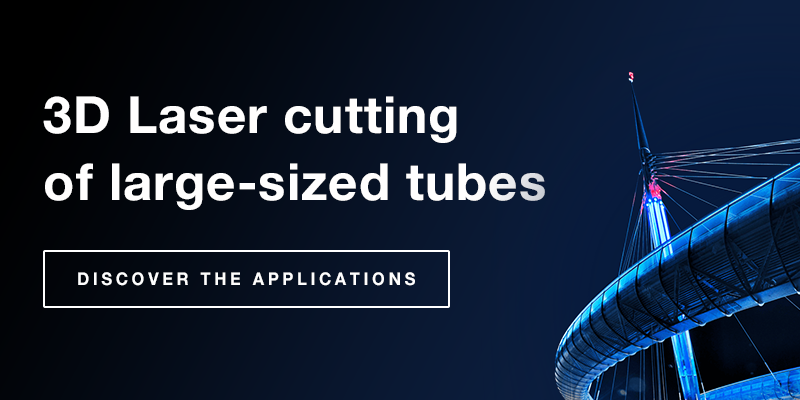The use of steel for structural applications is extremely significant and is estimated to grow in the future for residential and non-residential buildings.
The use of steel in constructions is evident in most recent public works:
- Airports;
- Harbors;
- Bridges;
- Skyscrapers.
The possibility of combining components of different shapes and sizes, using lightweight structures with complex and innovative shapes, has led to the creation of architecture that are redefining the human imprint on the surrounding environment.
 Fotocredits ©The Piranesi Experience | The use of steel in constructions has led to the creation of structures both lightweight ad complex.
Fotocredits ©The Piranesi Experience | The use of steel in constructions has led to the creation of structures both lightweight ad complex.
In situations like this, building with steel is essential.
Steel can be spanned across long distances and provides greater design freedom than other building materials such as concrete. It has consistently high-quality standards, precision, and guaranteed strength and durability.
The fabrication of steel is a highly regulated process. As a result, designers can estimate the exact behavior of steel, whatever the stresses (compressive, tensile, and shearing) it is subjected to. Designers like steel's ability to let their artistic imaginations run wild, while still having the ability to design and construct a building that is both safe and resilient.
These characteristics are crucial in large structures, such as bridges, skyscrapers, stadiums, airports, any others.
Building with steel is not only convenient for major works but it is also excellent in residential buildings for two main reasons:
- Each of the properties that make steel useful for large-scale structures, can be can be applied to smaller constructions;
- It reduces construction time and costs, gaining a faster return on investment.
In Europe and the USA, the share of the construction sector on the steel industry is on the rise, driven by the many advantages that this material can offer to builders and users. Today, 35% of steel consumption in Europe can be attributed to constructions while in the USA, this figure is over 40%. The success is clearly because of the many benefits that steel can offer:
Reduced delivery times and on-site costs
The steel components needed for the construction of a building are fabricated in advance and shipped directly to the build site, already prepared with the necessary joints, holes, lengths, etc. to make assembly quick and easy.
In such a context, the key to being competitive is the productivity with which the parts are made in the factory. Here, manufacturers can make use of increasingly automated and efficient equipment for making structural elements.
There are laser cutting systems for large diameter tubes and/or any section and HEA, HEB, IPE beams, etc. (steel profiles with sections of various shapes, widely used in all types of metal structures), provided with automatic loading and unloading systems to handle parts quickly and safely. This is important considering that some parts can reach a weight of 300 kilograms per meter of length.
Find out more about these types of installations
Respect of the budget
By using pre-assembled components, the construction times and costs can be accurately estimated, and waste and inefficiencies can be eliminated during the construction phase. Because costs are known, unexpected expenses can be minimized and, more importantly, the budget can be controlled.
Once again, modern processing technologies for steel components, such as tubes, beams, etc. make it possible to estimate costs and production times. Besides, today more than ever, the ability to plan every aspect of production, which is expanded by modern Industry 4.0 technologies, improves cost management and profit optimization.
Now, the right technology allows you to plan, simulate, estimate, plan production and dispatch in a unified and highly efficient manner.
Ability to integrate with other materials
The capacity with which the steel can be processed, assembled, disassembled, also promotes the integration with innovative materials:
- Better energy efficiency;
- A high degree of ambient lighting;
- Lower environmental impact.
Once again, the convenience is all the greater because the systems used in the factory to make the components can guarantee productivity, precision and versatility.
Technology like this makes it possible to replace multiple processes previously carried out onsite with a single, precise, clean and efficient laser-cutting process applied to large beams and tubes.
 Lasertube technology enables to replace multiple processes.
Lasertube technology enables to replace multiple processes.
Eco-sustainability
The low environmental impact is one of the many benefits of using steel in construction, particularly in dry construction. There are many advantages in this area:
- Reusability: steel is a completely recyclable material. At the end of its life cycle, each element can be melted down and the material reused, without having to resort to new raw materials;
- Waste reduction: dry construction strongly reduces the waste produced during the construction process. This is because the use of the material is optimized and the waste from metal processing is completely recycled;
- Reduction of transport costs: lighter structures and optimized use of the material means the volume of material transported is decreased, saving transportation and fuel costs and making the overall project more profitable.
More generally, there are two fundamental trends in terms of environmental impact:
- On the one hand, the need to renew old buildings made of reinforced concrete, which in many Western industrialized countries has now reached the end of their lifecycle;
- On the other hand, we are witnessing overbuilding that cannot continue at the current rate. It is estimated that over 100,000 hectares of land were covered in concrete in Europe between 2000 and 2006. These areas lose their natural ability to absorb water, endangering the hydrogeological system and threatening landscapes and the surrounding communities.
The inevitable consequence of all this will be a complete renewal of the current buildings and the conversion to a more eco-sustainable, environmentally friendly options.
Seismic safety
The use of steel also makes it possible to adopt the most modern and safe anti-seismic solutions. The ductility and flexibility allow it to absorb the impact of an earthquake, as well as damage from wind or other elements rather than crumbling or cracking like concrete or masonry.
Fire resistance
Even noncombustible materials such as steel can be affected by high temperatures. When building codes specify fire-resistant construction based on the results of these tests, structural steel elements must be insulated with protective materials.
The following measures may be adopted to comply with fire safety criteria:
- Surface treatments of steel structures with special intumescent coatings.
- Plasterboard protection cavities.
- Protective sheets with very high fire resistance.
What determines the quality of a steel structure?
In steel constructions, the final quality of the result is based on the quality of the material, the design, and the individual components.
The precision with which each part is made, the characteristics of the material, and the conditions of the cutting surfaces are all factors that impact the final strength of the structure and the simplicity of implementation, and therefore on the construction time.
Laser technology applied to the cutting of HEA, HEB or IPE beams, as well as large diameter tubes, allows excellent results to be achieved in this respect and is one of the most promising development models for the future of the industry.


